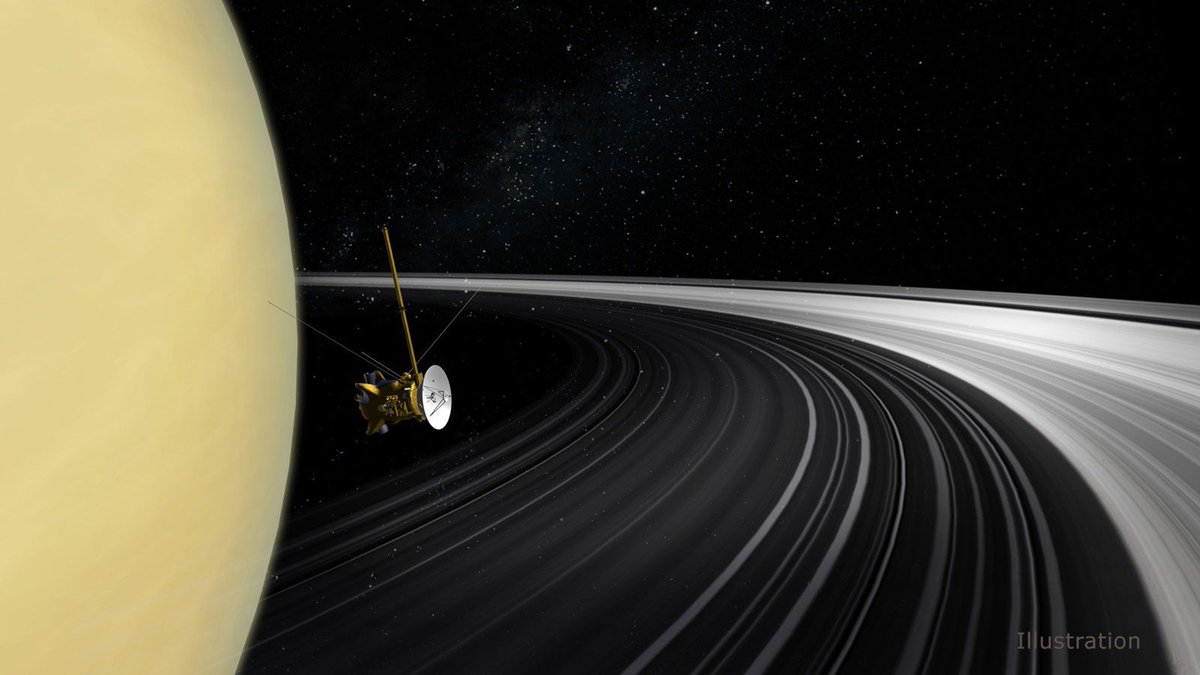

An illustration of the Cassini probe. Measurements of the mass of Saturn's rings taken by Cassini allow scientists to estimate the age of the rings. Image: NASA/JPL-Caltech
It’s tough to see inside of Saturn, because the atmosphere is opaque to all wavelengths of radiation. We have to rely on computer simulations and physics-based guesswork to try to understand the interior of that giant world. But researchers are becoming more adept at a different technique: looking for the slightest motions in the rings of Saturn.
The rings of Saturn are made of trillions of small bits of water ice, most small enough to fit in your hand. Each individual bit orbits Saturn in its own way, and each one is a tiny gravitational detector.
The planet Saturn isn’t just a simple, uniform ball of gas. It has complex layers and perhaps even a rocky core. Material moves up and down within the Saturnian atmosphere, and everything is in a constant state of motion.
Every time the interior of Saturn shifts, the particles of ice that make of the rings respond, affected by the new distribution of gravity. And different internal compositions of Saturn will make themselves known in the rings, because different arrangements of material will lead to different preferred orbits for ring material.
Sometimes entire waves can spread out inside the rings, or brief ripples appear in them. The analysis of the rings depends on having excellent observations of them, which we have thanks to NASA’s historic Cassini mission. That mission took countless high-resolution pictures of the rings, which astronomers can now use to try to reconstruct the interior of Saturn.
Already astronomers have used this technique, called ring seismology, to discover that the core of Saturn may be much fluffier than we previously thought. New research has found that the interior of Saturn is stratified in a stable way, meaning that it has clean, consistent boundaries between layers. Future analysis might even be able to reconstruct the entire interior structure and help explain the strange phases of matter found in that giant world.
We can't help ourselves but wonder about life elsewhere in the Universe. Any hint of…
When a star like the Sun dies, it puffs away its outer layers, leaving behind…
In the more than sixty years where scientists have engaged in the Search for Extraterrestrial…
Sailing has been a mainstay of human history for millennia, so it's no surprise that…
The Hakuto-R 2 mission launched on January 15, 2025. It's the successor to Hakuto-R, which…
A galactic merger is a chaotic event. When two massive structures like galaxies merge, their…